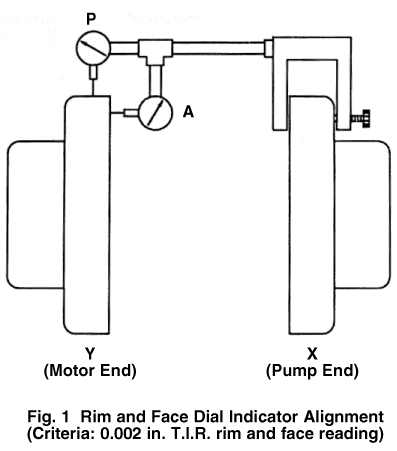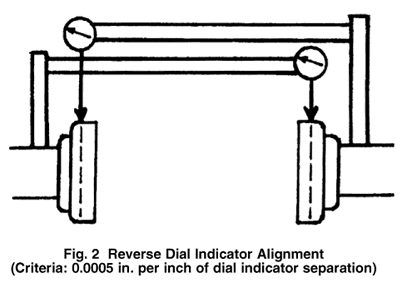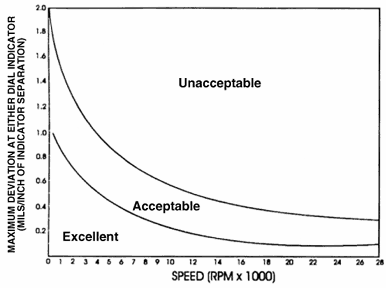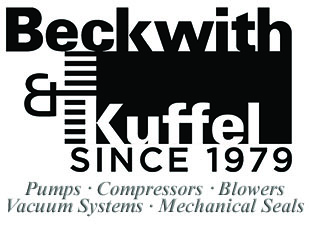RIM AND FACE
This method should not be used when there is no fixed thrust bearing or on pumps/drivers that have axial shaft movement.


Although a popular method, it's not any more accurate than either dial indicator method. Instruments are expensive and require frequent calibration.
REVERSE DIAL INDICATOR
This method is the most widely used and is recommended for most situations.

This procedure assumes the presenter knows how to align a pump and has a basic understanding of pump baseplates and piping installation. There are many alignment systems available. We will be using the plotting board with dial indicators developed by M.G. Murray. The plotting board is as accurate as any method available today and gives the best representation of the actual position of the machines that are being aligned. The actual procedure that will be discussed is the reverse dial indicator procedure because it is the most versatile and widely used alignment procedure used today.
PREPARING FOR ALIGNMENT
A. Baseplate Inspection
1. Inspect all mounting surfaces to make sure they are dean and free of any paint, rust, grime, burrs, etc.
a. Thoroughly clean mounting surfaces. Debar using a honing stone if necessary.
b. At this point, it is assumed that the baseplate has been installed correctly and is level.
B. Pump and Driver Inspection
1. Inspect all mounting surfaces to make sure they are clean and free of any paint, rust, grime, burrs, etc.
C. Shim In8pectIan
1. Inspect all shims to make sure they are clean and free of any paint, rust, grime, burrs. etc.
2. Dimensionally inspect ALL shims to be used and record the reading on the individual shims.
DO NOT ASSUME THAT THE SHIMS ARE TO THE EXACT DIMENSIONS THATARE RECORDED ON THEM.


